Makeup, Staging, Costumes and Music
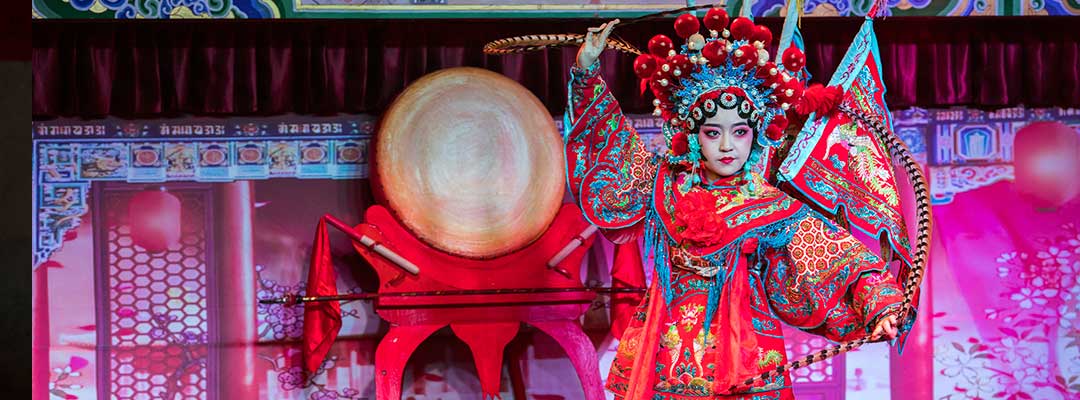
To better appreciate a Peking Opera show, you need to have some idea of the signs and symbolism of the show. At first you may be somewhat overwhelmed by the richness of colors and patterns as you see the performance on the stage. With a little background information you can soon make sense of the characters and the plot.
Facial Make-up
The actors in the 'Dan' and 'Sheng' roles wear simple makeup, which takes less than an hour. It includes a layer of white oil-based makeup, followed by peach-red rouge from the eyebrows down to the eyes and cheeks, then water-based black ink is used to draw thick black lines around the eyes and eyebrows, and finally the lips are highlighted with color.
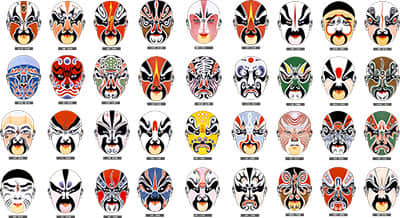 Beijing Opera Facial Masks
Beijing Opera Facial Masks
The makeup for the 'Jing' and 'Chou' roles is much more complex and results in 'Lianpu', or mask-like makeup. The colors and patterns painted on their faces reveal their personalities.
- Red face paint indicates devotion, bravery and uprightness;
- Black indicates either a rough and bold character, or an impartial and selfless personality;
- Blue represents someone who is steadfast in principle, fierce and astute;
- A character with a green face is impulsive and violent and acts with stubbornness and a lack of self-restraint;
- A yellow face is a sign of fierceness, ambition and cool-headedness;
- White face paint suggests treacherousness, suspiciousness, and craftiness;
- Gold and silver colors usually indicate gods or spirits.
Along with the colors, the obvious beauty, or equally lack of it, is also an indication of the character's disposition. The patterns on the faces are also intriguing, including the way eyes, eyebrows, forehead, nose and mouth are drawn. For example, up to twenty-six types of eyebrows are recognizable, including 'saw-toothed eyebrows', 'duck's egg eyebrows', 'butterfly eyebrows', 'willow-leaf eyebrows', 'bat eyebrows', and 'sword eyebrows'. The painted white nose of the Chou character suggests that the character is a clown.
The Costumes
The costumes worn by the actors fall into four main categories. The 'Mang' is a court robe worn only by imperial family members, prime ministers, or generals. Imperial members, and upper-class persons wear a 'Pei' as casual clothing. Warriors wear 'Kao' as a kind of armor. Middle class and ordinary people wear 'Zhezi', as casual clothing. Within each of these are countless sub-categories, indicated by variations in colors and patterns. Each specific costume includes elaborate and colorful shoes and accessories such as crowns, helmets, hats, caps, belts and hairstyles.
The Staging
Although the stories may be set indoors or out, the stage is not cluttered with complicated props and furniture. Rather the props are simple and minimal, with the audience expected to use their imagination to interpret the gestures and simple tools employed by the players to indicate the setting. The modern plays often have a painted stage-curtain set in the back, picturing the location of the scene. The actors use objects such as whips, trays, weapons, or boxes which they interact with in such a way as to indicate concrete objects or abstract concepts, and participation by the audience is required to complete the understanding. For example, a simple table placed on the stage may be used by the actors variously to indicate a bed, a bridge, a tower, a mountain, and so on. At other times the performers will skillfully mime with imaginary objects and virtual tools. Actors dancing with umbrellas might indicate a storm.
The Music

Rather than being down the front in the orchestra 'pit', the musicians are placed out of sight on one side of the stage. The instruments, all traditional, fall into two distinct divisions. The 'Wenchang', or civil division, which is mainly there to accompany the singing, features instruments such as the 'Jinghu' (a high-pitched bowed, string instrument), the 'Yueqin' (or 'moon zither', a string instrument with a round body), and the 'Pipa' (a 4-stringed, plucked instrument). The 'Wuchang', or military division, whose music is to accompany acting, dancing and fighting, features percussion instruments such as drums, wooden clappers, gongs and cymbals.
The music played by the Peking Opera musicians is not created by a composer, but is based on sets of traditional, codified tunes, with the singing mainly following two sets of tunes. When expressing an excited mood, such as happiness, anger, or agitation, the tunes called 'Xipi' are used. When expressing a subdued mood and deep thought, such as a loss, sorrow, or melancholy, the tunes called 'Erhuang' are employed.
Unlike the vocal system in Western opera, each role has its own particular singing style, with numerous specific singing styles indicated within each role category. For example, within the 'Dan' roles, the role of 'Laodan' (elderly woman) mainly uses the real voice, whereas the role of 'Qingyi' (young woman) uses mainly a falsetto voice. So a performer can play any role as long as he or she masters the singing style of that particular role.
As well as singing, there is recitation, or 'Changbai', where the story is told, but it is not at all like realistic conversation. The technique used is very different from normal speech, full of honorific terms, and with a rhythm created by the actor raising and then muffling his voice, and lengthening certain syllables.
Westerners watching Peking Opera tend to especially appreciate the acrobatics that are inherent to the art form and are displayed mostly in the form of martial arts. A good combat is the highlight of a martial play, and the reckoning between two bitter enemies, or a crowded punch-up, make for interesting theatre.
OR
Are you eager to begin your Chinese cultural journey?
Drop us a line and we will promptly connect you with our leading China expert!
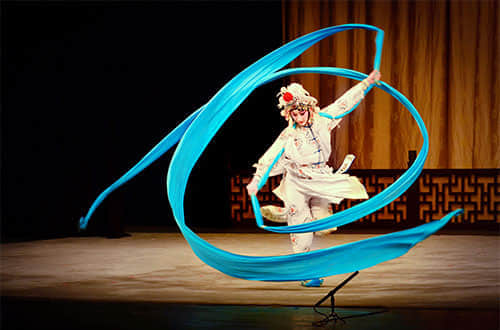 Chinese Operas
Chinese Operas 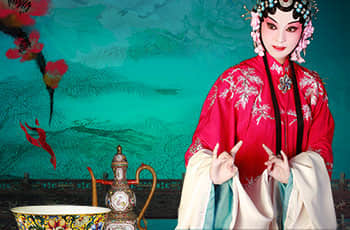 10 Famous Peking Opera Artists
10 Famous Peking Opera Artists 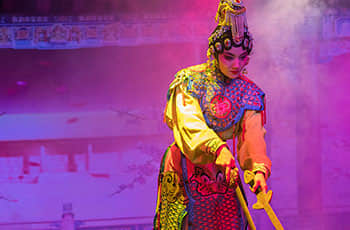 The 5 Most Popular Peking Opera Stories
The 5 Most Popular Peking Opera Stories 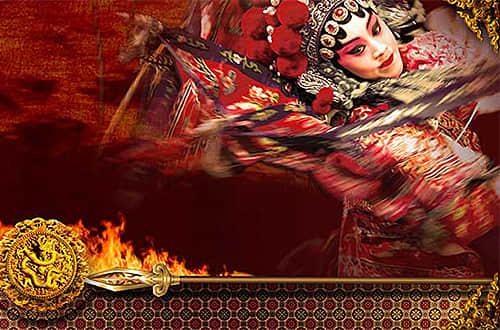 Where Can I See Peking Opera in Beijing?
Where Can I See Peking Opera in Beijing?